I wrote this piece with Tyler Cohen in September, 2021 for The Avalanche Issue. The article was published on the heels of a record-breaking winter during which 37 skiers, snowboarders, snowmobilers and snowbikers died in avalanches, making 2020/21 the deadliest season in modern history. The snowpack was weak and the backcountry ski industry was riding high off the post-pandemic boom, making for the perfect storm of heuristic traps and terrain traps. This winter, after an extended dry spell, a New Years snow storm and the U.S.’s first avalanche fatality of 2024, I found myself revisiting this article, reminding myself that, for all the joys the backcountry brings us, it is still a wicked learning environment. —Betsy Manero
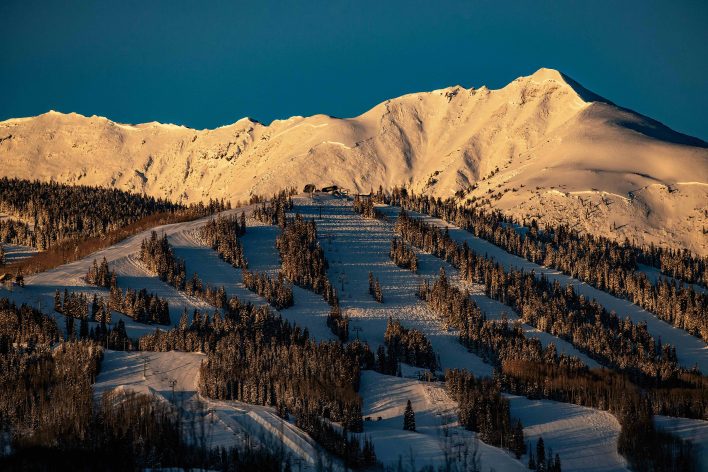
Fall 2020’s snowfall foretold the story of an extremely deadly avalanche season. But even prior to the early season storms that formed unstable snowpacks across the Mountain West, other indicators pointed toward an unpredictable winter.
Sales of alpine touring equipment, splitboard gear and avalanche safety accessories had begun to skyrocket nearly as soon as the coronavirus pandemic struck the U.S. in March 2020, shuttering resorts. Over the summer and into autumn, interest in backcountry gear—and the activity—only continued to accelerate, leading to a year of unprecedented growth in the regularly growing snowsports segment. Late winter 2019/20 had already seen unusually high instances of avalanche accidents across the West. And Covid-related resort restrictions seemed to be further piquing interest in skiing and riding out of bounds.
Then it snowed. Then it didn’t.
“We got a bit of early season snow in late November, and then we had two weeks of no snow in the first two weeks of December,” Nikki Champion, a forecaster with the Utah Avalanche Center (UAC), told Backcountry in February 2021. “That set up our entire season.”
Such a pattern can be common across the Mountain West and is the typical impelling force behind persistent weak layers and seasons of prolonged, elevated avalanche danger. Thin, early season snowfall will often melt—but not entirely—and through autumn’s clear, cold and dry weather it can become the faceted, unconsolidated base upon which winter’s snow sits. Once buried, that unstable substrate persists until warming temperatures melt the snowpack or the crystals concede to gravity. Even if the snowpack grows deep and strong, it can be a sturdy bridge over a shoddy foundation.
Colorado saw this pattern in autumn 2020, too, only worse. “We had a fairly pronounced drought in November, so all that snow that sat on the ground from the early season snowfall became very weak and faceted,” Brian Lazar, a forecaster and the deputy director of the Colorado Avalanche Information Center (CAIC), told Backcountry, also in February 2021. After several subsequent storms and dry spells from November through early January, Colorado’s snowpack had become a multilayered mess. “This is the kind of dangerous and worrisome snowpack structure that we only see once a decade,” Lazar said.
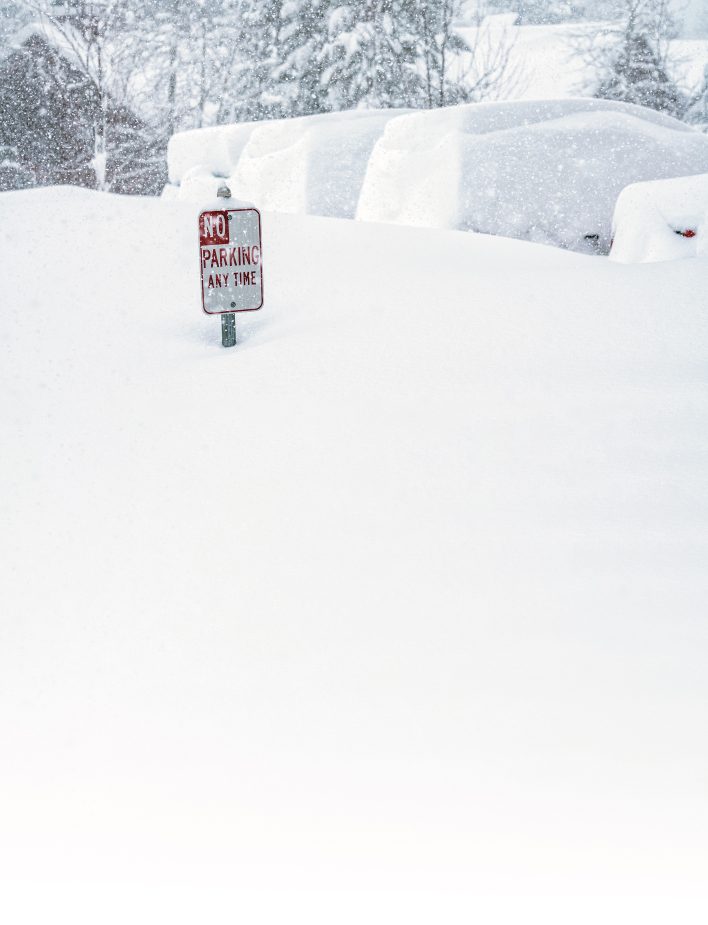
Doug Coombs once said, “There’s no such thing as too much snow.” The residents of Tahoe City, Calif., are divided on whether that’s true or not. Ming Poon
As the forecaster pointed out at the time, such a once-in-a-decade situation can be troubling for its potential to ensnare new and experienced backcountry travelers alike. “If you’re dealing with a snowpack that you only see every decade, even if you’ve been skiing in the backcountry for 20 years, this might only be the second time that you’ve ever experienced these kinds of conditions,” Lazar said. Based on the number of fatalities that Colorado recorded in winter 2020/21, the state may have experienced its deadliest confluence of conditions ever.
Historic Winters
Three snowmobilers, nine skiers and one snowboarder died in avalanches in Colorado in winter 2020/21. Three decades ago, in the winter of 1992/93, the state experienced an equally high death toll, and it’s been over a century since the state has seen more than 12 fatalities in a single season. In that era, those record winters regularly saw tragedies involving mining and transportation, like the 1902 Liberty Bell Mine disaster that killed 24 miners and rescuers in Telluride in several separate avalanches.
Since the turn of the 20th century, the point at which transportation- and mining-related avalanche deaths began to decline, Colorado’s avalanche fatalities have mirrored those of the wider U.S., remaining relatively flat until the 1970s, when the ski industry boomed across the country.
“Recreational avalanche deaths soared in the 1970s,” Dale Atkins wrote in his 2006 paper for the International Snow Safety Workshop (ISSW) entitled “A History of Colorado Avalanche Accidents, 1959-2006.” “During the decade avalanche accidents and deaths changes [sic] from those-at-work to those-at-play.” Twenty-seven individuals died in Colorado avalanches in the 1970s, yet only four were not recreating, Atkins reported, and those four included one guide and one ski patroller.
Colorado’s avalanche fatalities doubled from the 1970s to the 1980s and continued to increase through the 1990s and 2000s. Nationwide, the death toll rose in the ’90s before spiking during two seasons in the late aughts (2007/08 and 2009/10) that saw a record 36 deaths apiece.
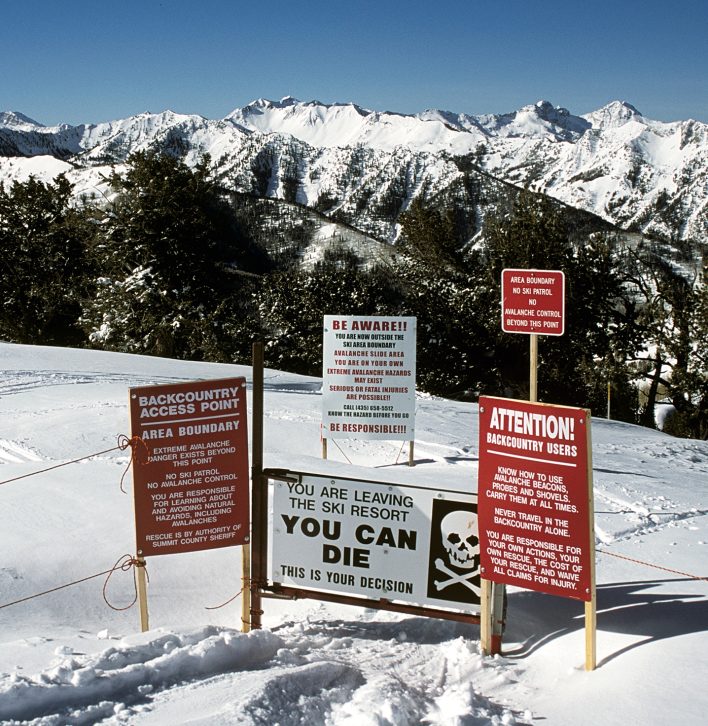
In an ISSW paper from 2010 comparing the first decade of the 21st century to the last decade of the 20th, Atkins pointed out one factor partly driving the nationwide spike: “Snowmobilers account for 40% of avalanche deaths—largest single category.” Skiers and snowboarders, he added, similarly made up 39% of the decade’s average 28 fatalities per year.
Later, after noting that U.S. avalanche fatalities had increased by 27%, Atkins concluded that the situation could be far worse. “While this rate of increase is significant, it is much less than the dramatic but unmeasured increase of winter recreation,” he wrote. “The increased availability of avalanche information from forecasting and education programs are likely the reasons the fatally [sic] rate is not greater.”
The Deadliest Month
Amid the 2020/21 season’s unprecedented number of avalanche fatalities, several accidents set the winter apart.
A single weekend in the middle of December recorded the season’s first four deaths, including a snowmobiler in Wyoming’s Sheep Pass area; a former ski patroller in the Anthracite Range west of Crested Butte, Colorado; and two friends southeast of Ophir Pass, in Colorado’s San Juan Mountains.
“Colorado is home of weak snow, and avalanches are not uncommon. This year is worse,” the CAIC reported following the Ophir Pass avalanche, sharing that 108 human-triggered avalanches had been recorded over the preceding week. “We haven’t seen conditions this bad since 2012.”
Utah experienced its first fatalities in January when, on two separate occasions, snowboarders exited the backcountry gate atop Park City Mountain Resort’s (PCMR) 9990 chairlift in considerable-to-high avalanche conditions. One, a 31-year-old from Clinton, Utah, was caught, carried and buried in the Dutch Draw area just beyond resort boundaries. Neither he nor his partner carried avalanche gear. The other, a 57-year-old from Park City, died in a slide off the Square Top ridgeline that demanded extensive rescue work through a period of elevated avalanche danger.
By February, avalanche fatalities became a near daily occurrence. A 54-year-old Vermonter skiing solo on New Hampshire’s Mt. Washington died in an avalanche in Ammonoosuc Ravine on the first of the month. That same day a massive recovery mission began near Colorado’s Ophir Pass for three prominent community members from the town of Eagle who’d been caught in a slide while on an annual hut trip. All three experienced skiers perished in the avalanche that would become one of two mass-casualty incidents in a week. Six days later, on a slope known as Wilson Glades between Utah’s Millcreek and Big Cottonwood canyons, seven skiers from two separate parties were caught and carried by an avalanche that swept through a stand of trees. Three survived, four did not, and the accident shocked the Wasatch.
By the time the calendar flipped to March, 33 skiers, splitboarders, snowmobilers and snowbikers had perished in U.S. avalanches. When a heliskier died in late March on Alaska’s Matanuska Glacier, the death toll equaled the modern historic record of the winters 2009/10 and 2007/08. And when a serac fall killed a climber in mid-May on the Ruth Glacier of Alaska’s Denali National Park, the season’s 37 fatalities marked a new and tragic datapoint in the history of wintertime recreation.
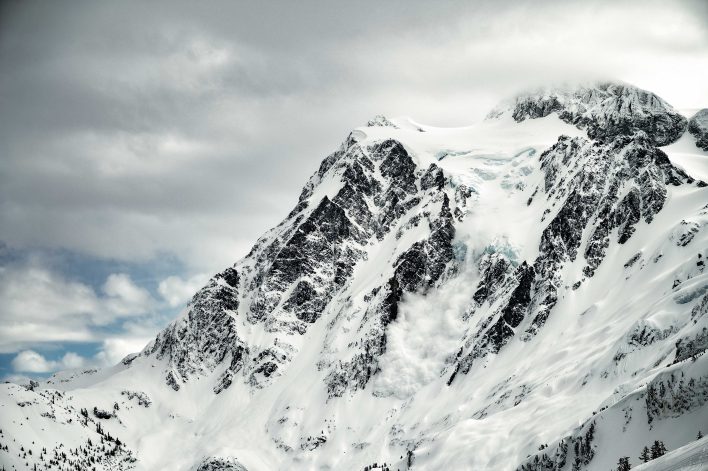
After a close call in the Mt. Baker Ski Area backcountry, photographer Colin Wiseman returned to the scene of the incident for a debrief. “Suddenly this large avalanche, likely triggered by icefall, came off Mt. Shuksan’s Hanging Glacier a few miles away,” says Wiseman who had brought his camera to snap a photo of the day-old avalanche crown. Colin Wiseman
A New Face of Backcountry
Following the two fatal January avalanches that involved snowboarders who had exited PCMR through the 9990 backcountry gate, the resort closed the access point in February pending conversations with the U.S. Forest Service. Then, on August 13, 2021, PCMR announced a decision for a permanent closure of the gate that accesses the Park City Ridgeline.
“I can no longer reconcile the number of tragedies and the impact to the community and our employees with the desire to provide convenient, lift-served backcountry access from the 9990 exit,” said Mike Goar, PCMR’s chief operating officer, in a press release.
The 9990 gate has a storied past: It’s the gate through which three snowboarders on previous occasions entered the backcountry and died in avalanches in the Dutch Draw area since 2005. These fatalities and numerous rescues have made the 9990 gate a focal point in a long-running debate around the use of the word “sidecountry,” or backcountry terrain that’s easily accessed by a chairlift.
“I have long been vocal about trying to eliminate the term [sidecountry] from the professional vernacular in order to emphasize that it is truly ‘backcountry,’” former PCMR patroller Jake Hutchinson wrote in The Avalanche Review (TAR) in 2013. “Whether it is ten feet or ten thousand feet from a ski area boundary, snow and avalanche conditions are different from those within the ski area and should be treated as such.”
Hutchinson wrote this in response to Paul Diegel, the executive director of the Friends of the Utah Avalanche Center at the time, who had argued that, instead of deleting the word sidecountry from our lexicon, we needed to find a better way to reach these skiers and riders. “The sidecountry user group is big, growing, at risk, and largely not responding to the messaging we have developed over the years for backcountry users,” Diegel wrote in the same issue of TAR.
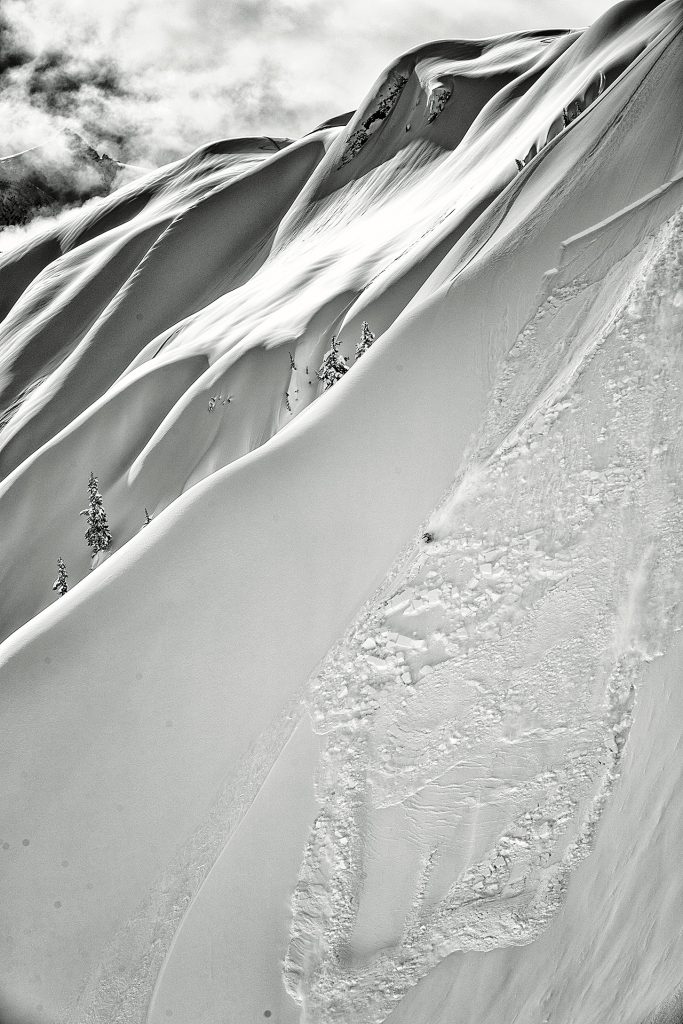
An unidentified snowboarder triggers a slide in Washington’s Mt. Baker backcountry. Luckily, he was only buried to his waist. Grant Gunderson
While Hutchinson and Diegel had differing opinions on how to educate sidecountry skiers and riders, they agreed there was a problem: Backcountry gates at resorts meant that entering avalanche terrain didn’t require the same intention as it once had and confused the lines between controlled, inbounds terrain and dangerous slide paths. Nationwide, sidecountry access and accidents were on the rise, a trend punctuated in February 2012 at Washington’s Stevens Pass Ski Resort when an avalanche killed three high-profile skiers and caught several others. This accident garnered national attention, including through John Branch’s Pulitzer-Prize-winning New York Times feature “Snow Fall.”
The growth in sidecountry access over the last decade has mirrored the larger trend in backcountry participation, spurred by rapidly accelerating technological developments in gear. “Before, you made a choice of skiing in your touring stuff, which meant you made a pretty big sacrifice in downhill performance. Or you had alpine gear, none of which toured,” reflects ski industry veteran Mike Hattrup, who has spent the last three decades working in product development for K2, Fischer and now Black Diamond Equipment. “Now every single slot in that continuum is filled in, whether you want rando-race light or heavy-metal alpine performance.”
This trend began in the early aughts with the introduction of frame-style touring bindings, which were more akin to step-in alpine bindings than Dynafit-style pin bindings. Four-buckle boots with walks modes increasingly met the demands of resort skiers who wanted to tour. “Initially it was the equipment that opened the door to more people,” says Hattrup. “And then, as more people came in, brands started seeing that there’s a market for better products, and it just kept going back and forth.”
Gear sales increased. So did the crowds at trailheads. By 2013/14, SnowSports Industries America indicated the number of backcountry skiers and riders had reached nearly six million. By 2021, that number had doubled.
The Reckoning
In September 2012, Dale Atkins, then the president of the American Avalanche Association, spoke at the ISSW in Anchorage, Alaska. Thirty-four avalanche fatalities had occurred in the U.S. during the previous season, including one in the Wasatch’s Dutch Draw in February. The 2011/12 season had been yet another recent winter that had significantly exceeded the 10-year average.
Atkins proposed that the industry needed an overhaul. Taking cues from a Swedish driving safety program called Vision Zero, he told the crowd that instead of attributing fatalities only to the decisions of skiers or riders, the people sitting in front of him—the forecasters, guides, educators, land managers and patrollers—had to start considering how they could each decrease fatalities. “The traditional approach to road safety and the avalanche world, is, ‘What can we do?’” Atkins told the crowd. “Vision Zero is a step beyond that. Instead, it’s asking, ‘What else can we do?’”
In January 2013, Tom Murphy, then the operations director for the American Institute for Avalanche Research and Education (AIARE), followed Atkins’s lead and announced that AIARE would launch a new program called Project Zero (which it rebranded as the Avalanche Project in 2015), with the goal of decreasing the number of backcountry fatalities to zero by the year 2025.
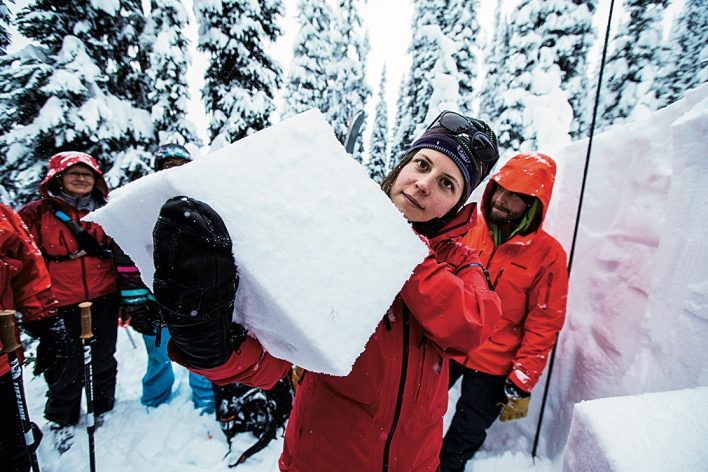
“We want to create a new normal,” said Murphy in a 2014 interview with Backcountry. “Currently the thinking is, ‘I have my beacon, shovel, probe. Let’s go.’ We need people to be thinking, ‘I have my gear, what’s the avalanche problem today and how do we avoid it?’ That will require a systemic change. And all of the stakeholders—the users, enforcers, rescuers, designers—will need to work together to promote it.”
The winter of 2013/14 saw 35 fatalities, including the death of one skier on Pucker Face outside of Wyoming’s Jackson Hole Mountain Resort. In a debrief of that fatality published in TAR in April 2014, Alex Do, a ski partner of the deceased, echoed Atkins’s ISSW statement. “It’s easy to think, ‘Those guys at Pucker Face were a bunch of risk takers and hard chargers, but I’m not like that, and I would never get into a situation like that,’” Do wrote. “When reading accident reports, hindsight makes the critical mistakes so wildly glaring that we find strong rationale to differentiate ‘us’ from ‘them.’ The first step was to embrace the idea that it isn’t ‘other people’ getting into accidents in the backcountry: it’s us.”
These fatalities helped push a new wave of avalanche education and outreach that followed Atkins’s and Murphy’s visions. The programs have harnessed the power of the internet to reach new users before they even step into avalanche terrain. Know Before You Go (KBYG) is one such program, started in 2004 by UAC forecaster Craig Gordon to reach school-age children and overhauled in 2015 in a partnership between the UAC and CAIC. Instead of forecasters and researchers sharing information they’d learned at ISSW, the new KBYG involved online learning and a 15-minute video featuring professional athletes like Travis Rice and Johnny Collinson and sharing five basic principles: Get the gear, get the training, get the forecast, get the picture and get out of harm’s way.
Another program is Teton County Search and Rescue’s (TCSAR) Backcountry Zero Program, which is based on the same Vision Zero program shared by Atkins. “[Our volunteers] felt like the preventative search and rescue projects that we’ve been doing were good ones, but that we could do more,” says TCSAR executive director Stephanie Thomas, who unveiled the Backcountry Zero program at the 2016 Wyoming Snow and Avalanche Workshop after several close calls and accidents in the Jackson Hole backcountry the previous season.
On top of education and outreach, Backcountry Zero runs a survey program at Jackson Hole Mountain Resort, where skiers exiting resort boundaries are asked a series of questions about their preparedness. While the numbers of users wearing a beacon or who are Level 1 graduates haven’t changed much over the past six years, Thomas notes, “One of the biggest impacts that our surveyors have is that, just by standing at the gate, they calculate that about a third of the people turn around.”
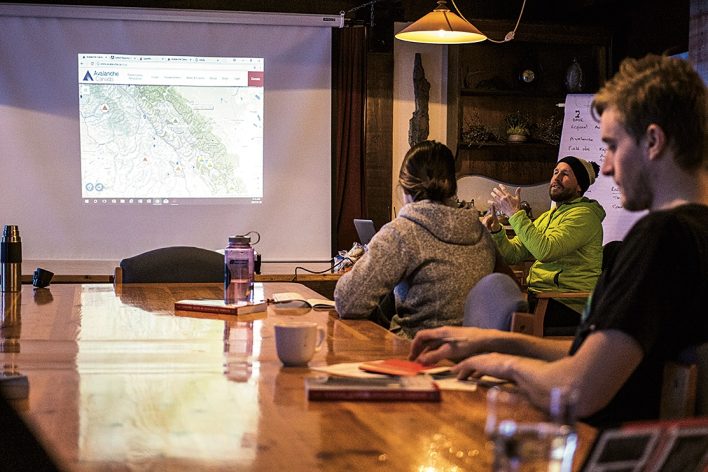
As for Backcountry Zero’s impact as a whole, “It’s really hard to correlate any of that. But I can just tell you that people know about our project,” says Thomas. “It seems that people are spending more time and money on getting the equipment that they need before going into the backcountry, before skiing or even on a hike.” She’s seen a culture change, where people who have taken a Backcountry Zero program are proud to carry their TCSAR-issued first aid kit and bystanders who witness an accident act as first responders while they wait for TCSAR to hit the scene. Additionally TCSAR’s five-year review of Backcountry Zero cited a decrease in backcountry fatalities in the Jackson Hole area, dropping from eight in 2016 to one in 2020.
Even so, TCSAR has been plenty busy. In February 2021, which saw a particularly big snow cycle, the organization received 17 different rescue calls. Between numerous helicopter missions, rescues of stranded snowmobilers and a 16-day window of considerable or higher avalanche hazard, February’s 700.6 volunteer hours represented a fourfold increase over the same month a year prior.
Avalanche Reeducation
Howie Schwartz, an internationally-certified guide and the owner of Sierra Mountain Guides, took his first avalanche course on New Hampshire’s Mt. Washington in 1994, and he remembers being shown pictures of death and destruction. “You were made aware of the consequences of a poor decision,” he says, “but you weren’t really given many of the tools to make a good decision.” Students at the time, he feels, received just enough information to get themselves into trouble, but many lacked the skills they needed to get themselves out of it or even recognize mistakes.
At the 2002 International Snow Science Workshop, Ian McCammon presented his still-relevant paper “Evidence of heuristic traps in recreational avalanche accidents.” In it, he found that, out of the 598 avalanche accidents he studied, the skiers and riders who had taken an avalanche course were actually more likely to be involved in an avalanche than those without education.
“The current and growing emphasis on human factors in avalanche education seems wholly appropriate, but will it be effective?” pondered McCammon. “Numerous studies suggest that merely learning a taxonomy of persuasion tricks does not make people any less susceptible to them. Thus, it seems likely that effective human factors education must do more than provide a laundry list of heuristic traps: It must give people simple, viable tools for recognizing and mitigating heuristic traps and other decision errors in avalanche terrain.”
In the early 2000s, while working an AIARE instructor training course, Schwartz wrote what would become the AIARE Decision Making Framework on a bar napkin. This framework took cues from McCammon’s research; laid out a flow chart that prompted advanced planning, regular partner check-ins and a continuous assessment of surroundings; and led AIARE to overhaul its education system. In recent years, AIARE has updated its Decision Making Framework to be the Risk Management Framework, which took Schwartz’s idea a step further, making it a season-long approach to risk assessment with a focus on tracking trends.

Avalanche students gather for a field day in the Monashees, B.C. Ryan Creary
This movement hasn’t just been pushed by AIARE. Salt Lake City, Utah-based American Avalanche Institute (AAI) instructor and internationally-certified guide Billy Haas recalls his first avalanche course—also on New Hampshire’s Mt. Washington—in 2009: “Not anything to do with the instructors, but I came away from that being, like, ‘Oh, my gosh, all these tests I have to do, and I don’t even know how to do them right.’” Since then, Haas has seen a move away from an emphasis on snow mechanics, which most beginner avalanche students won’t be able to grasp in a single weekend, in favor of using the avalanche forecast to inform good decisions.
Haas and Schwatz both credit much of this change to the division of the professional and recreational avalanche education tracks that took place in winter 2017/18. Prior to the split, the Level 2 curriculum sought to serve both advanced recreationists and future snow professionals. Schwartz compares the old Level 2 to an amphibious car: “Neither a good boat nor a good car.”
When the Rec Level 2 and the Pro Level 1 were created it meant that recreationists and those looking to become snow pros were both better set up for success. “I think the education is moving in the right direction and teaching the right things,” says Haas of modern avalanche education.
Stepping Out
Of the 37 avalanche fatalities in the 2020/21 season, 22 were skiers and snowboarders. Of those 22, 16 were skiers and six were snowboarders; three were women and 19 were men; five were skiing or riding alone; and four occurred after the victim exited a gate at a ski resort. Each avalanche happened within 24 hours of either significant snowfall or a significant wind event. Almost all the deceased were experienced backcountry travelers—only two did not carry avalanche rescue gear.
It’s clear that avalanche education is reaching the novices. AIARE hosted 18,461 students in 2020/21, a 63% jump from 11,687 students in the previous season. Level 1 enrollment accounted for almost all of that growth. Meanwhile, AIARE Level 2 enrollment remain comparatively low, both in total numbers and growth, with 652 participants in 2019/20 and 900 in 2020/21. While this year-to-year change represented the largest increase in Level 2 participation in a decade, it still leaves the question of where and how Level 1 graduates are continuing to keep their avalanche knowledge sharp.
“What a lot of people feel is, ‘I want to tour, I just need to go get my Level 1 and then I’m good.’ That was really just the start of your backcountry education,” stresses Hattrup, who also works as a guide and avalanche instructor. He hopes more retailers and brands will push this messaging.
In his debrief of the Pucker Face avalanche, Do outlined what others can learn from his experience, writing, “I regularly practice transceiver search scenarios modeled after the exercises I learned in my AIARE Level 1 class. After this accident, I’ve discovered that practicing proactive activities that reinforce avalanche avoidance takes much more nuance.”

Johnny Lyons straight lines it south after triggering an avalanche in the early-season snowpack of Colorado’s Gore Range. Jeff Cricco
To provide his students with continuing avalanche education opportunities, Schwartz offers digital avalanche happy hours for anyone who has taken a course with Sierra Mountain Guides in the past two year. During these Zoom calls, an instructor presents a case study or talks through a personal anecdote, allowing the participants to take in a debrief and learn from the experience of others. “I’m just trying to impart to people that we’re still here for you and we have these other ways that you can engage with us,” says Schwartz.
Additional continuing education opportunities are becoming increasingly available, from free online programs like KBYG to annual snow and avalanche workshops. The UAC even harnessed the power of Zoom to debrief the Wilson Glades fatality, which was virtually attended by over 1,000 people and has since been viewed nearly 6,000 times on YouTube. For those looking for more formal education, Haas has seen growth in private avalanche refresher courses, where participants and their ski partners have the ability to customize the curriculum to their needs.
“At the end of the day, these people made mistakes, and it was awful,” says Haas after teaching through winter 2020/21’s fatalities. “But we need to stop saying, ‘Well, you know, it could have happened to any of us,’ or these comments that brush it off, and be a little more serious, a little more stern, and treat [backcountry skiing] like the high-risk sport that [it] needs to be.”
The 2020/21 season provided an urgent reminder of just how dangerous the backcountry can be, how an unstable autumn snowpack can plague an entire season and how increased numbers of users recreating in the mountains creates tension, stress and scarcity. But perhaps it can serve as something more, something that other deadly winters before it have proven. Tragedy can and has served as a catalyst to push avalanche education in the right direction. It’s up to the users to pursue it, continue it and put its lessons into practice.
This article was originally published in September 2021 in Issue No. 141, The Avalanche Issue. To read more, pick up a copy, or subscribe to read stories like these as soon as they are published in print.










Related posts: